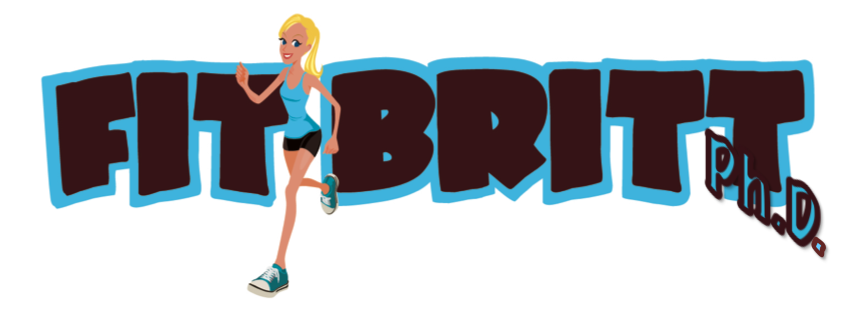While carbohydrate and fat are the main sources of fuel during a bout of exercise, protein still has many essential purposes. It provides the building blocks for bones and muscles, creates enzymes responsible for producing energy and repairing muscle after exercise, and creates the transport systems for nutrients and oxygen within the body.
How much should I eat?
Just as we discussed with Carbohydrates, your protein consumption should be related to your body weight and activity level. The current "recommended daily allowance" for protein for adults is 0.8 g/kg of body weight. This equates to approximately 10-35% of one's caloric consumption. However, in the research lab I work in, we encourage participants to eat 45% of their calories from protein. This helps to build and maintain more muscle mass when combined with a resistance training program (additionally it has been proven more successful than higher carbohydrate amounts in our weight loss programs). A more fitness-friendly suggestion is to consume one of the following:
- For more endurance based individuals: 1.2-1.4 g/kg of your body weight
- For those who focus on resistance training: 1.6-1.7 g/kg of your body weight
Here is my example: On average, I work out 1 hour a day, 5 days a week. I perform moderate intensity resistance training and cardio. I would probably start with 1.2-1.3 g/kg of protein in my daily diet, and then increase my protein intake if I didn't feel like I was consuming enough calories in a day (for instance, if I was losing weight when my goal was to increase muscle size).
A review of the calculation:
1. Take your weight in pounds and divide by 2.2 to get your weight in kilograms.
2. Select your level of physical activity and the corresponding grams of protein you would like to start with.
3. Multiply your weight in kg times the number of g/kg of protein for your activity level. I suggest starting with the low to mid number in the range.
I suspect most of my readers will be in the 1.0-1.5 g/kg range.
Now, if you do the math between my carbohydrates, protein, and fat examples - you'll realize that based on this calculation, I am still eating way less protein than carbohydrates, AND protein is definitely not 45% of my caloric intake. But you will also see that it only adds up to about 1570 calories total. This is where I would start adding more healthy protein (not carbohydrate or fat) to my diet to continue to increase the caloric intake to a comfortable level for me.
What kind should I eat?
You probably remember from early science classes that "amino acids are the building blocks of protein." There are 20 amino acids (AAs), and our body can produce about half of them itself. These are called nonessential AAs, because it is "not essential" that we obtain them from our diet. The remaining AAs are "essential" for us to obtain in our diet because our body cannot produce them. So when we discuss types of protein, we talk about complete sources that contain all of the essential AAs (typically animal proteins such as meat and dairy products), and incomplete sources that may be missing out on a few of those essential AAs (vegetable proteins such as grains, legumes, nuts and seeds). A common suggestion is to pair two incomplete proteins within a meal (or throughout the day) to make sure you obtain all of the essential AAs. Some examples include soybeans + rice, wheat bread + peanut butter, pinto beans + corn tortillas.
Here is a chart from my textbook that shows you the amount of protein you can find in common foods (click on the chart and a larger version will open in a separate window):
In addition to making sure you are obtaining all of the essential amino acids, it is also important to opt for protein sources that are healthier for you - such as being lower in fat. Here are a few pointers to keep in mind:
- Look for lean cuts of meat. "Prime" and "Choice" are going to be good options.
- Prepare the meat in a way that limits added fat. Opt for the grill where fat can drip off, instead of frying.
- Try to limit your consumption of red meat as well as deli meats (excess consumption can lead to colon cancer). Buy deli meats that are non-cured and nitrate-free.
When should I eat them?
It is best to combine protein and carbohydrates during every meal and snack. This will keep you feeling full longer and gives your body the nutrients it needs throughout the day as you go from task to task.
Here are a few exercise-specific tips:
- Consume carbohydrate and protein in a 3:1 ratio after an exercise session to stimulate recovery of glycogen stores and maximize muscle synthesis.
- The aforementioned may also help to decrease muscle soreness.
- It may be best to consume smaller portions every 1-2 hours post-exercise to sustain the elevated synthesis rates.
And to end, here is an interesting tidbit for vegetarians:
This is news to me, so I am going to quote it straight out of my trusty textbook: "Proteins derived from plant foods are approximately 85% digestible, those in a mixed diet of meat products and refined grains are approximately 95% digestible. Based on these differences, it is recommended that people who eat no flesh or dairy products consume 10% more protein daily"
Textbook resources:
*Sport Nutrition for Health and Performance; 2nd Edition. Manore, Meyer, & Thompson.
Have a HEALTHY day!
~Fit Britt






